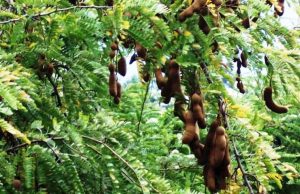Among the Borana, an ethnic group that lives in northern Kenya, there are three funeral celebrations: the day of the burial, two weeks after the death and one year later. The role of the eldest son. The meaning of the sacrifices.
The Borana believe that, at death, the body – nafa – separates itself from life – lubu. The lubu remains as a wandering spirit – hekera. It is like the wind and has no form. Nobody sees it. Only some men among the Borana called Yub (fortune-tellers) can dream of this wandering spirit. Those who have behaved well in life go to the ‘place of life’, fula jirenna demani. Those who have done wrong go to the ‘place of fire’, fula ibidda demani. The Borana call the dead Hakera and they are like shadows that live together.
There are three stages in the funeral ceremony – the day of the funeral, two weeks after the death and a year after the death.
Arrangements for the burial, called soddu, are seen by the first-born of the deceased. Early in the morning, a bull is slaughtered. It is divided and half is cooked. Meanwhile, a camel is brought before the hut and is loaded with the cooked meat and with four skins of milk and then all the family members of the deceased go towards the grave in Indian file. Having placed the meat and milk in a place out of the sun, they light the fire and prepare the buni for the prayers, a drink made from fresh milk and coffee beans toasted with oil and fat.
Once the prayers are finished, guided by the cadadu, an expert in the matter of ceremonies, the eldest son places a stone on the grave and plants a tree and a flower next to the grave. The stone, resembling a flagstone, is called daka soddu, the tree, chalanqa soddu, the flower, argessa soddu. The same symbols are placed by all the male children while the daughters place a small plant called a chobi.
After the meat and milk are distributed, the eldest son begins the libations. He sprinkles the planted symbols with buni, milk and tobacco, saying “for the buni, the milk and the tobacco, father give us peace, may Waqa (‘God’) keep you in your place … father I offer you choice tobacco, may Waqa keep you in your place”. The other family members repeat the same gestures. When the ceremony is over they surround the grave with thorns called wanga, to keep animals away. Returning home, another prayer is recited and the ceremony of the soddu is complete.
Two weeks after the death, the family members of the deceased offer another sacrifice called nagessu, – ‘restoration of peace’. Again, an animal is killed because the Borana believe that the death has brought suffering to the family. This rite is intended to restore peace and harmony not only among the family members still alive but also between the deceased and the family members.
The final ceremony will be held a year after the death with no slaughtering of animals but just prayers. This completes the funeral rites of the Borana.
Among the Borana, there are three sorts of graves and ways of burying the dead. The first is for a child who dies before being given a name. The child is usually buried in the hut or outside close to the wall of the hut The other sort of grave is that of an elderly person who has completed the entire journey on the Borana social scale, the jarsa. The third is that of people who have been named but have not been able to complete the journey of the social class. No symbols are placed on the graves of children.
On the graves of elderly people, the people place a stool of which one leg has been broken on the day of death; a Horroro, which is a walking stick used by the deceased on days of festival. The stick is forked and is broken. White stones are also placed on the grave. They also place another stick called a Dannis and a perforated milk container. Sandals are also placed on the grave.
If the deceased is a woman, the following items are placed on her grave – the Sikke, a stick that the woman received on the day of her marriage. It is also marked with the number of the children the woman has had; a stool, Barchuma, also with a broken leg and a milk container that is Qodha, useless; sandals are also placed on her grave.
The grave is usually a metre and a half deep. In the bottom of the grave a space is hollowed out to serve as a coffin for the deceased. The deceased is placed on their side and, if it is a man, the head points in the direction of the rising sun to the east. If it is a woman, her head points west. The deceased is wrapped in a white sheet. When the deceased has been lowered and placed in the hollow space, pieces of wood and mud are placed across it. Then the grave is closed and covered with stones.
All the participants bring stones to place on the grave. The grave assumes a circular shape about eight centimetres high and the place itself will be respected. Then everyone returns to their activities. Now, the sons and daughters may travel once again.
– Provvido Crozzoletto






